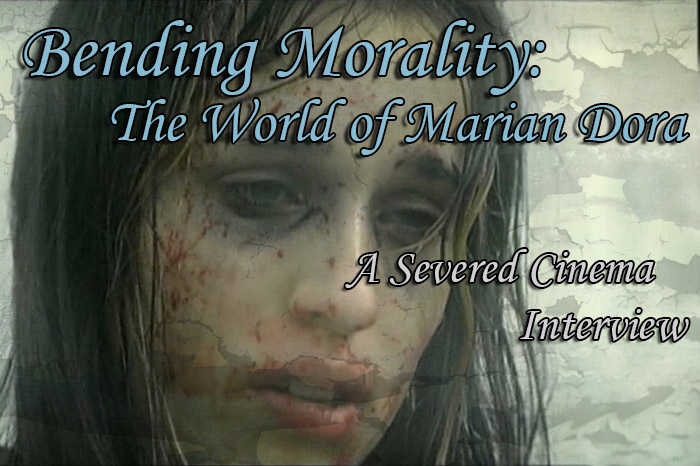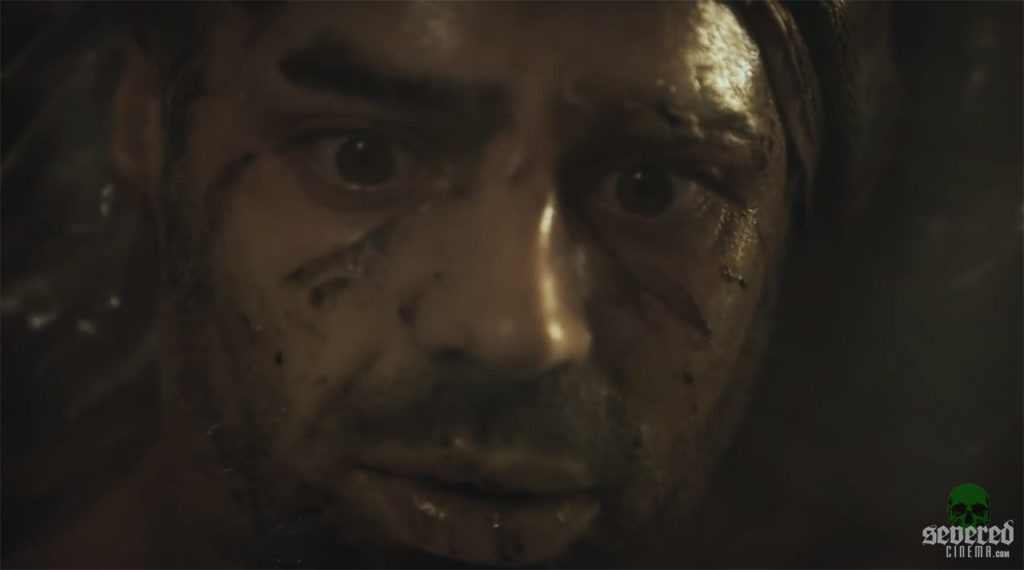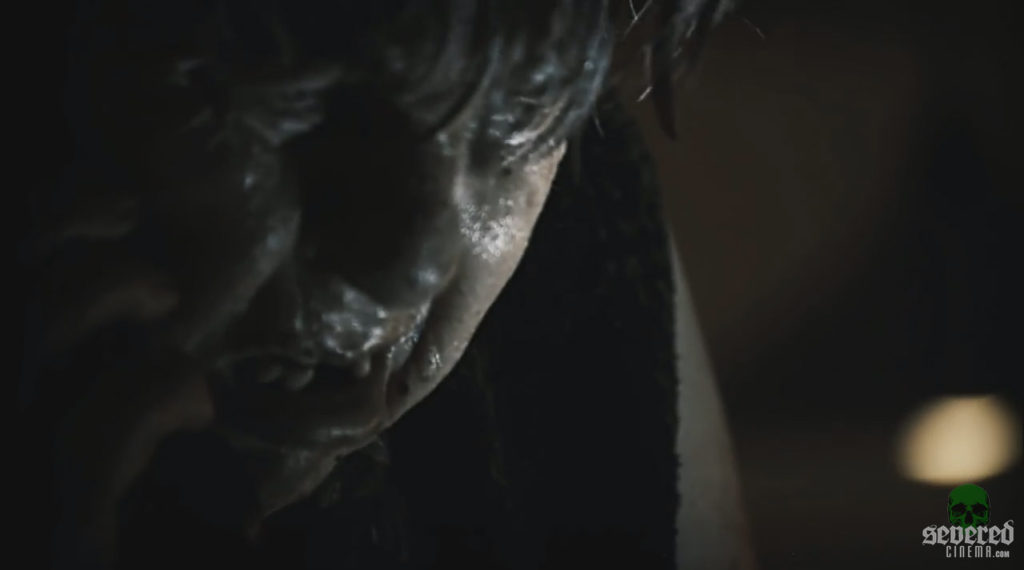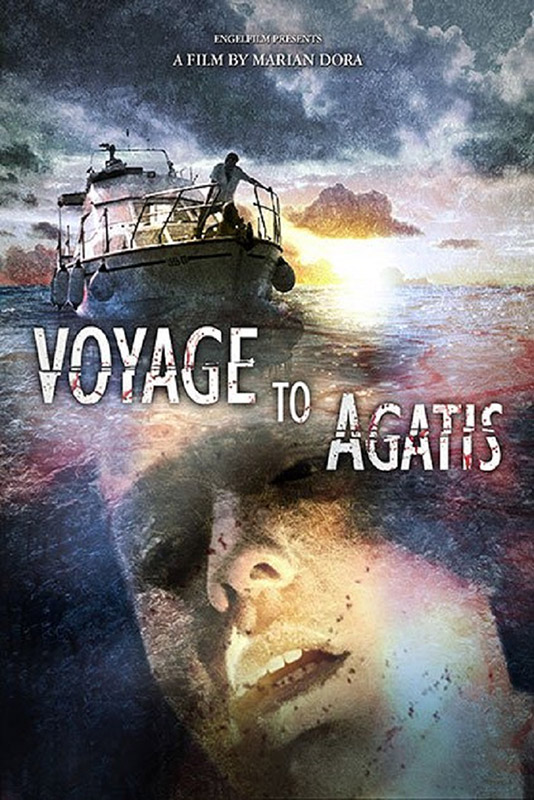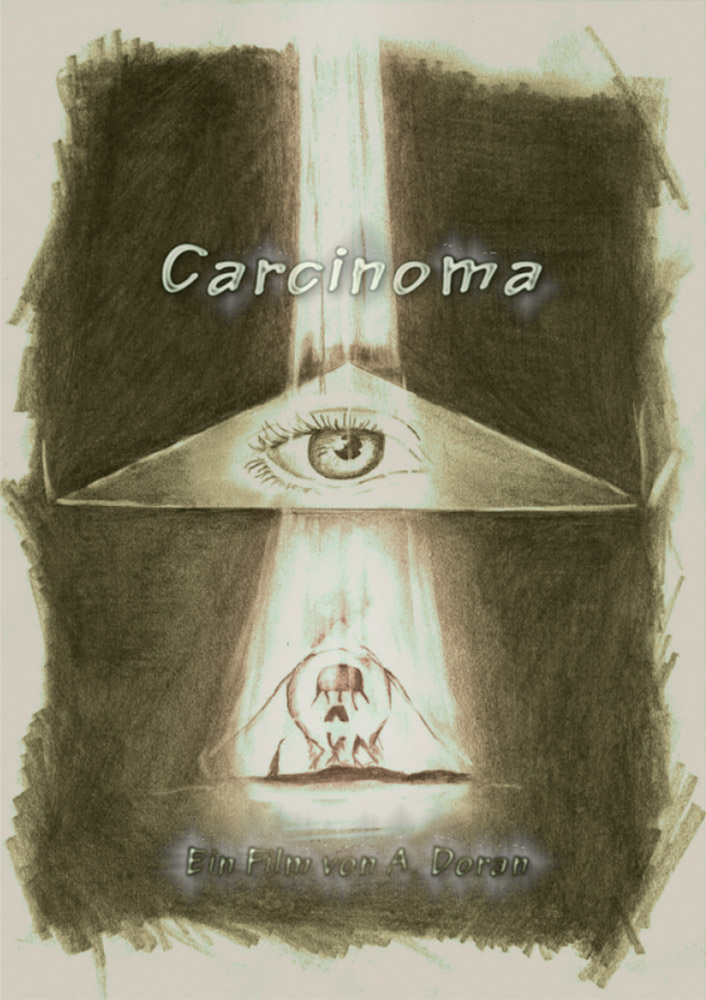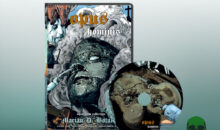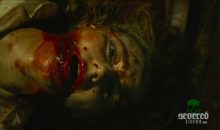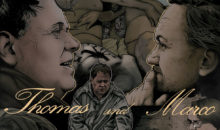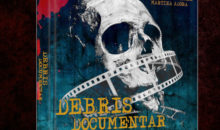Bending Morality: The World of Marian Dora – A Severed Cinema Interview
Marian Dora Interview: The work of German director Marian Dora can be labelled as Infamous, controversial, beautiful, and passionate. The intelligent German director has made a name for himself in making underground art masterpieces. Love or hate his work, there is no denying the man has an eye for capturing the best and worst of humanity on film. What we are made of, what we are capable of and most importantly, what bodily fluids emit from our orifices. This interview is a testament to the mind of Marian Dora, a man who keeps a low profile in fear of being prosecuted for his work, an artist that will do whatever it takes to get his message across in his films, even if it means bending moral fibres till they break. This is the world of Marian Dora.
Debris Documenter, this is said to be your first movie? Only available as a bonus on a release of Voyage To Agatis? I’ve developed my own interpretation of the movie but I’d like yours, what was this film intended to be about?
First of all, thank you very much for your interest in my work. I will try to answer every one of your questions as good as possible.
After making many dozens of short films, documentaries and second-unit-stuff I wanted to do Melancholie Der Engel. But the pre-production made no progress. As a result of my frustration I made Debris Documentar by following the producer, Carsten Frank, for one weekend to document his work with my camera. What I had in mind was something you can compare a little bit with early works of Paul Morrissey — Flesh, Trash or Heat. This is why I didn’t care about camerawork, lighting or atmosphere in this film. I just recorded a kind of reality. It is biographic and in some way autobiographic, too.
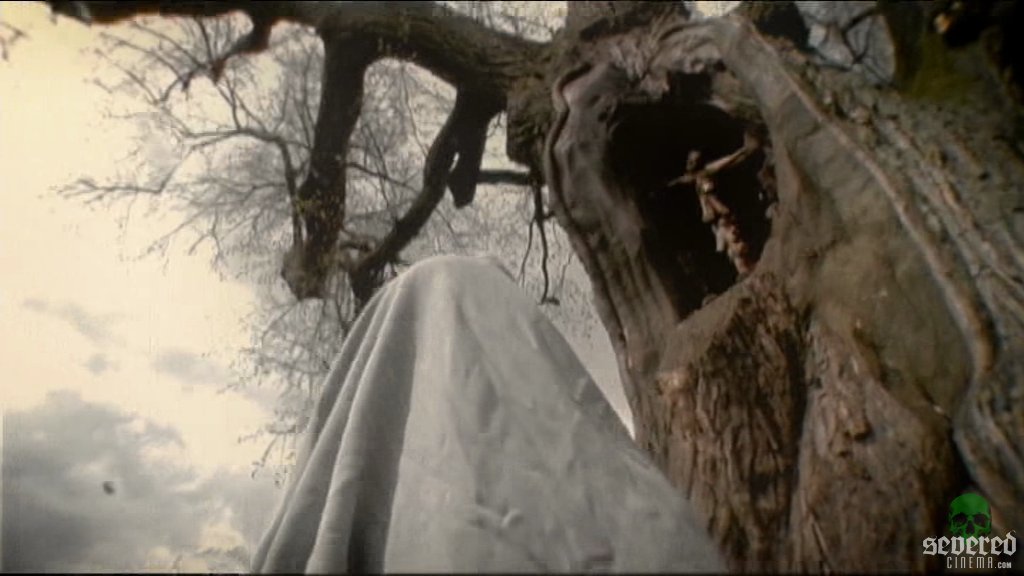
The actor Carsten Frank, he appeared in a number of your films such as Cannibal, Melancholie Der Engel and Debris Documenter. I asked him through Manoush, as I did for you for an interview, but I’m told he refuses do interviews. The man has done some very daring things in your movies. Could you tell me if you ever had to coax him into doing some of the more extreme scenes and please feel free to give specific examples.
As a very dedicated actor, Carsten Frank never had a problem to do even the most extreme performances. But sadly, he had a problem when he saw the results in the film, because he was afraid of legal prosecution. That is why he forced me to remove more than half an hour of the most extreme stuff of Melancholie Der Engel. After handling out the master tapes to him the material is lost.
A lot of your viewers, even your devoted followers seem to detest your use of animal violence in some of your films, in particular Melancholie. Why do you feel the need to portray animals suffering, tortured and killed in your work? Do you feel it’s a strong metaphor for human suffering and easier to get across with such raw emotion from an actual dying life form?
It is a part of the specific philosophy of my films to avoid the faking of scenes like torturing animals or human beings. But there are some reasons going beyond that philosophy. Usually there are three reasons to use scenes like that you mentioned in your question. The first reason is that such scenes help to clarify the characterisation of the protagonists. Personally, I don’t think this is a good justification for the use of reality. The second, more important reason is to create the appropriate atmosphere. The closer you come to reality, the more intense the pictures will be. The third reason is the most important reason — scenes like that are a declaration that the film you are watching is not made for entertainment. You can select the audience — everyone just watching a film to have fun will be rejected.
Carcinoma, being your latest work and a departure from your other movies, it still has the great camera work and the foggy almost dreamlike shooting style I’ve come to expect and grown to love from your movies. The subject matter is very emotional and I felt very bad and remorseful for the main character Dorian, due to all the suffering he endured. Was there a particular message you were trying to deliver with Carcinoma or was it to basically show the damage cancer can do to a human life?
I didn’t wanted to make this film but a completely different one, called I Love Snuff. But during the first day of shooting, the owner of the story rights withdrew the permission of using it. I prepared to shoot and had the weekend off, so I contemplated some minutes and decided to do the cancer film instead. What fascinated me in the case of that man with his monstrous tumor is the fact that it happened not in the past or in a country far away, but right among us. It was the indifferent social environment that made it possible.
Do you personally know anyone who has had a form of cancer and was that the inspiration for Carcinoma or was it just an idea you came up with?
I know many people suffering from cancer. But when I was confronted with the extreme case of Dorian I managed to meet him during his last days of life and spoke many hours with him. I wrote down every detail, even the words he used. I put his words exactly into the script.
Carcinoma is not a fictional film but a documentary thing. It was a very accurate re-staging, even more accurate than Cannibal. Most of the people you see in the film are the real persons playing their own role. I shot the film on the locations the real events took place.
You make extreme art films and are known for being very elusive and shy to media and public exposure. Do you avoid exposure because of the fear of people not understanding your work or do you do it to separate your private life from your professional life. Your work is wonderful and very dark and powerful and I can see a lot of ignorant people not understanding it, especially in this fucked up politically correct world we now seem to live in where every idiot gets offended by the slightest thing thrown at them.
I always tried to make my films understandable, even for people not knowing the person behind the films. They should be on their own. But there are some more reasons why I have to hide myself. First of all, I have to prevent prosecution, especially for some elements I arranged during shooting of my Blue Snuff films and Melancholie Der Engel. On the other hand it got several death threats after those films.
I’ve seen on social media you are very appreciative of fans of your work and take pictures with them. You have a group dedicated to your work and have developed a cult following with your films. Did you ever see this happening? Is it something you were hoping for?
The pictures you mentioned had been made during a film festival. The organizers persuaded me to join the festival. I was treated very well and friendly, so I agreed to do some photos, but only for private use. But generally, if I would place importance on that kind of appreciation I would do other films than the films I prefer to make.
Voyage To Agatis is one of my personal favorites. I love the simplicity of it — its not a long film, very simple but very artistic, beautiful, effective and savage at the same time. I understand it was shot in three days. I recently interviewed Thomas Goersch, he was perfect in the role of Raphael in Voyage To Agatis, a real scum bag. Can you explain a little about the making of Voyage To Agatis, the challenges of it?
There was no idea to make the film Voyage to Agatis, there was only a situation and I had to find a story. A friend of mine suggested to me, “Why don’t we spend a weekend on a small boat we can rent for two or three days? Bring your video camera with you, in that time you can shoot a small film.” I reflected a minute and said “Okay, why not?” I was allured by the very intimate situation at the small boat and had to find a simple story for it. So I didn’t take this too seriously. But after all it is interesting to see that there are some people liking this microscopic film. One time a Dutch film school Professor told me that he loves Voyage to Agatis and he couldn’t believe that it is the same director behind that film who also made such a boring, amateurish shit like Cannibal.
In a lot of your films I notice the use of broken dolls and various mannequins as well as bones and insects. Do you use this as a form of expression? For example, the broken doll floating in the murky water in Voyage To Agatis, is that to represent the dead murdered carcass of Lisa?
In Voyage to Agatis, as well as in Melancholie Der Engel, I was mainly interested in the metaphysical aspect I tried to bring into the film. The story of Voyage to Agatis was inspired by two books, Open Season by David Osborn, and especially, The Bermuda Triangle by Charles Berlitz. I was fascinated by the idea that there are several sites on the earth where the behaviour of human beings seems to be influenced by a strange force that, in this case, is represented or symbolized by the blind doll coming from the deep. The title is derived from that mythological Agarthi, and of course the doll is a reference to the excellent films Bermuda: La Fossa Maledetta by Tonino Ricci and Il Triangolo Delle Bermude by Rene Cardona Jr. Both films I saw at least twenty times. Of course there is a relation between that doll and Lisa, but not every aspect is explained. In the European cinema tradition there should be always a secret remained in a film.
Animals play a big part in your movies as well, weather they are in states of turmoil and trouble or moments of death they seem to frequent all of your movies. Can you explain the use of this?
In most of my films I tried to use the nature, the landscapes, the panoramas as well as the animals to illustrate the inner shape of the protagonists. The way I try to work with these elements helps me to build up the atmosphere that fits to the situation. I always prefer outdoor shooting, I don’t like interior shots.
You seem to rely on a lot of human waste and sexuality in your films. Human waste seems to frequent most of your pictures, even your most recent movie Carcinoma with the abundance of feces. What role does this play in your movies? To show the ugliness of the human body?
Very early in my life I made the sad experience that most people are very fluffy personalities with only simple working minds, without desires, dreams and ambitions. By that I got the feeling that the most interesting aspect of persons is not their mind, but their body, with all its elaborated functions. Maybe there are some parallels with persons like Dennis Nilsen and Jeffrey Dahmer here. This is why I started becoming more and more interested in the body — mostly I choose very fleshly themes for my films. I don’t want to show the ugliness of the body, but the realness.
Melancolie Der Engel is your long running masterpiece of film as considered by many due to its long running time and display of numerous atrocities. What went into making such a twisted and ambitious project?
Melancholie Der Engel was a very ambitious, non-commercial experiment. A very complex film, very difficult to make. The point was to make a film that you can read in different ways. But to understand the film it is necessary to disregard your moralities and to identify with one of the two main male protagonists. It is impossible to identify with one of the female parts. What is more is we tried to make the film as less interesting for “normal” viewers as possible in order to get the “right” audience. The three weeks shooting was a horrible experience, full of hate, violence, madness, drug-abuse and depravation.
In Melancholie Der Engel a young wheelchair bound girl is constantly mistreated and brutalized. What point were you trying to get across with this?
The girl in the wheelchair was a victim and she was consequently treated as a victim. For the film it is not very important what happens to this girl. Only the feeling and thinking of the main protagonists is important. Sometimes it’s a little bit sad that people only look at such marginal — and very short in relation to the running time — scenes. Melancholie Der Engel is about much more — about friendship and the destiny of the two leading males. If I only would have in mind to shock the people, I could do much better, believe me.
I love the music in your films, especially the work of David Hess in Melancholie and Transmitted Dreams in Voyage To Agatis. What kind of relationship do you have with him and Uli Lommel? I understand Jess Franco’s voice was also used in Debris Documentar on an answering machine. Is this true?
Most of the music in my films I did myself, as Transmitted dreams, etcetera. I used two David Hess songs in Melancholie Der Engel and Debris Documentar because I had the feeling they would fit in the mood of the films. I also conducted an instrumental version of one of his songs for Melancholie Der Engel. David Hess was a friend of mine for many years, and it was coincidence that he and Ulli Lommel know each other for years, too. Ulli Lommel I’ve known since 1996. It is a long friendship and I worked as second unit director, etcetera, for countless films of him. Our last collaboration was Boogyman: Reincarnation. In Debris Documentar you hear the voice of Jess Franco, David Hess, Peter Martell and Katja Bienert on the answering machine or the phone, because for that film I followed Carsten Frank for one weekend, and this was the reality that I put into the film, of course.
Your movie Cannibal was based on Armin Meiwes and I understand Ulli Lommel would not release it because it was too extreme? Victor Brandl really gave an intense performance in this one. You never worked with him after this picture?
I made Cannibal to do Ulli Lommel a favour, because he needed the film as contract awarded by the company Lions Gate. But after I screened the film he told me that it is not possible to hand the film over to Lions Gate or do anything else with the film, because he feels sick always when this film comes in his mind. This is why he did his own version, Diary of a Cannibal with me as second unit director again. I made some shorts with Victor Brandl before Cannibal, and he played a small role in Melancholie Der Engel. After that, I wanted him to play the lead in Reise Nach Agatis, but he refused because this project would be too violent for him. This is why I cast Thomas Goersch. After watching the completed film, Victor Brandl regretted declining it, by the way.
What are your thoughts and feelings on homosexuality? I know in your movies you are not afraid to show male nudity and female nudity and rightfully so, it should be equal.
As mentioned before, I am always looking for bodily themes for my films. As well as in real life. Sometimes people criticize me for being only interested in outer appearances, but they don‘t understand the motivation behind that.
How did you meet the adult film actor Zensa Raggi who starred in Melancholie Der Engel? Is he a friend or did he just audition for the role? All of the actors including him did a wonderful job in the movie.
At the beginning, Frank Roth should play the part of Brauth. He would be the perfect character regarding the metaphysical aura of Brauth. But because of schedule problems he had to decline the part. Ghazi Barakat wanted to replace him, and he would be fit in the role mainly because of his violent attitude. But I decided for Zenza Raggi, who was introduced to Carsten Frank by Manoush. I liked his filmography with Aristide Masssaccesi (Joe D‘Amato), and his Muslim origin would contribute to the evil aspect of the role. It was hard to work with him due to his violent outbursts and all the drug abuse, but all in all he was the best actor I worked with, regarding his techniques. A real method actor.
When shooting Carcinoma did your lead actor Dorian go through all of the anal scoping procedures and tests that would actually be required if he had indeed had a form of cancer? You definitely made the hospital not feel like a warm and welcoming place and a lot of the people there were crazy and doing weird things.
We shot the film Carcinoma chronologically in order to help Dorian to empathize the complete course of the cancer disease. Regarding the hospital scenes, I had to shoot it this way because the original case dictated it this way. The bad feelings of the patient during his first hospital stay lead to the motivation to decline a necessary operation. But besides that fact, I always had the feeling that hospitals are the places of real horror in our society. And the slaughterhouses, of course.
Why do you sometimes use the alias Art Doran or MD Botulino?
I use different alias names for different functions, as an actor, filmmaker, musician etcetera. All in all I have eight or nine alias names. For some legal reasons sometimes I have to change an alias name, as it happened for Carcinoma.
I thank you for your time. It is an honor to have the opportunity to ask you these questions. I had re-watched all of your movies before I conducted this interview. They are just as fascinating and as effective as seeing them all again for the first time. Thanks to you and a big thank you to Manoush for arranging this.


